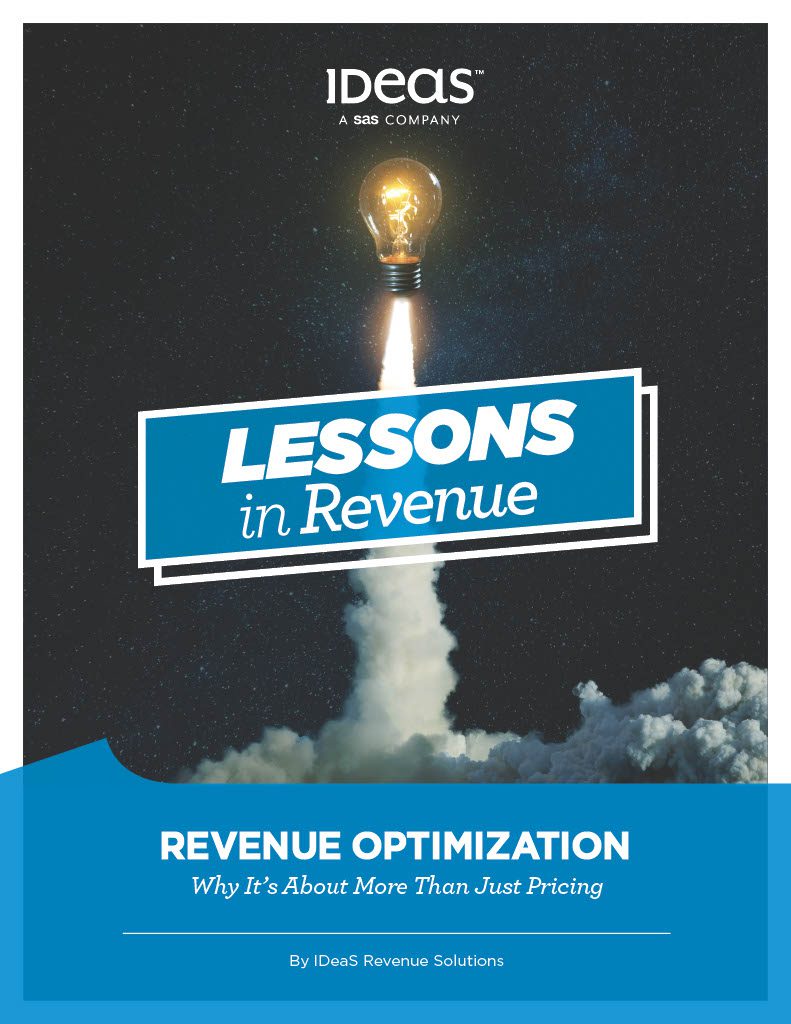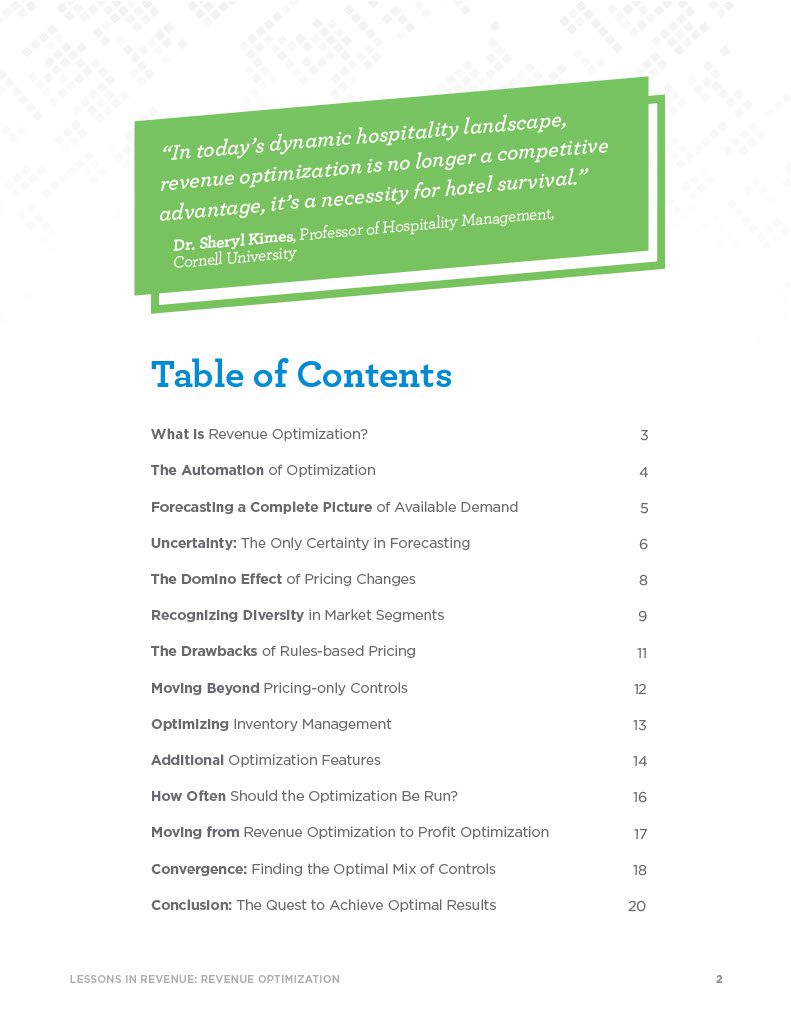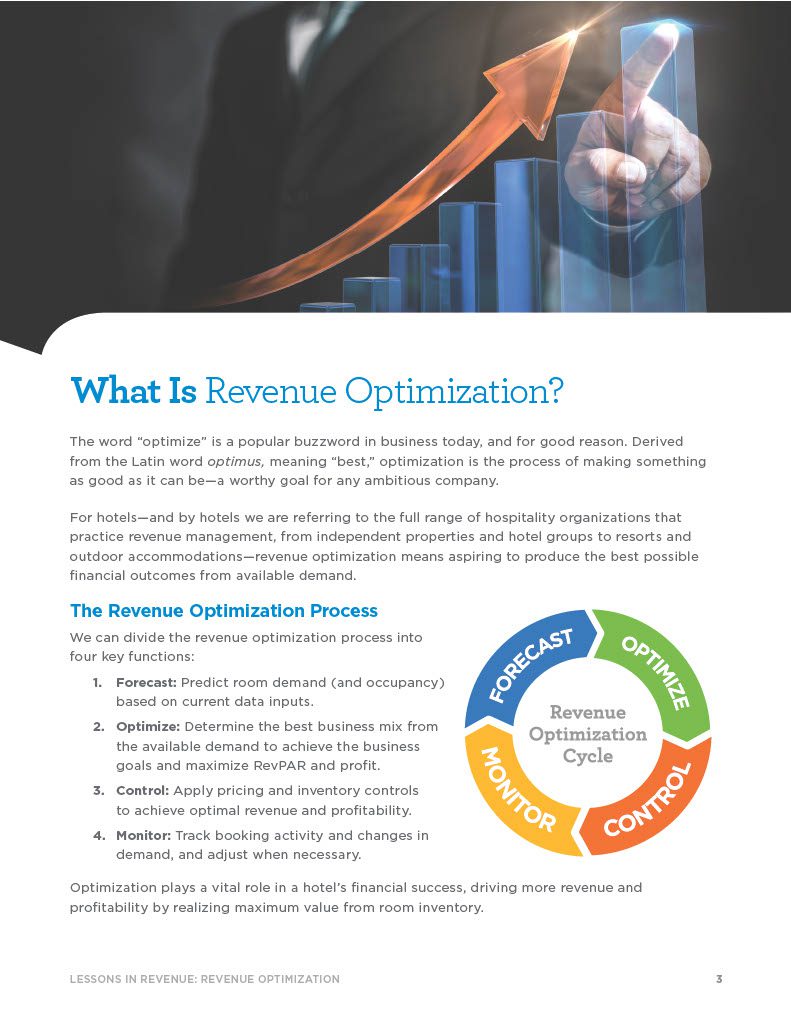Lessons in Revenue
Revenue Optimization
In today’s competitive landscape, revenue optimization is paramount for maximizing financial outcomes in the hospitality industry. From forecasting demand to implementing strategic pricing, this ebook delves into the four core functions of revenue optimization: forecasting, optimizing, controlling, and monitoring. Learn how to harness these principles to drive increased revenue and profitability, ensuring your hospitality organization achieves its full potential.



